February 21st, 2023
This morning we got up very early. Looking out the window, we were surprised to see that it was snowing. We left the hotel at 7:00 a.m. and took the train to the famous Arashiyama Bamboo Forest to get there before the crowds of visitors arrived. We managed to do that and it was worth it!
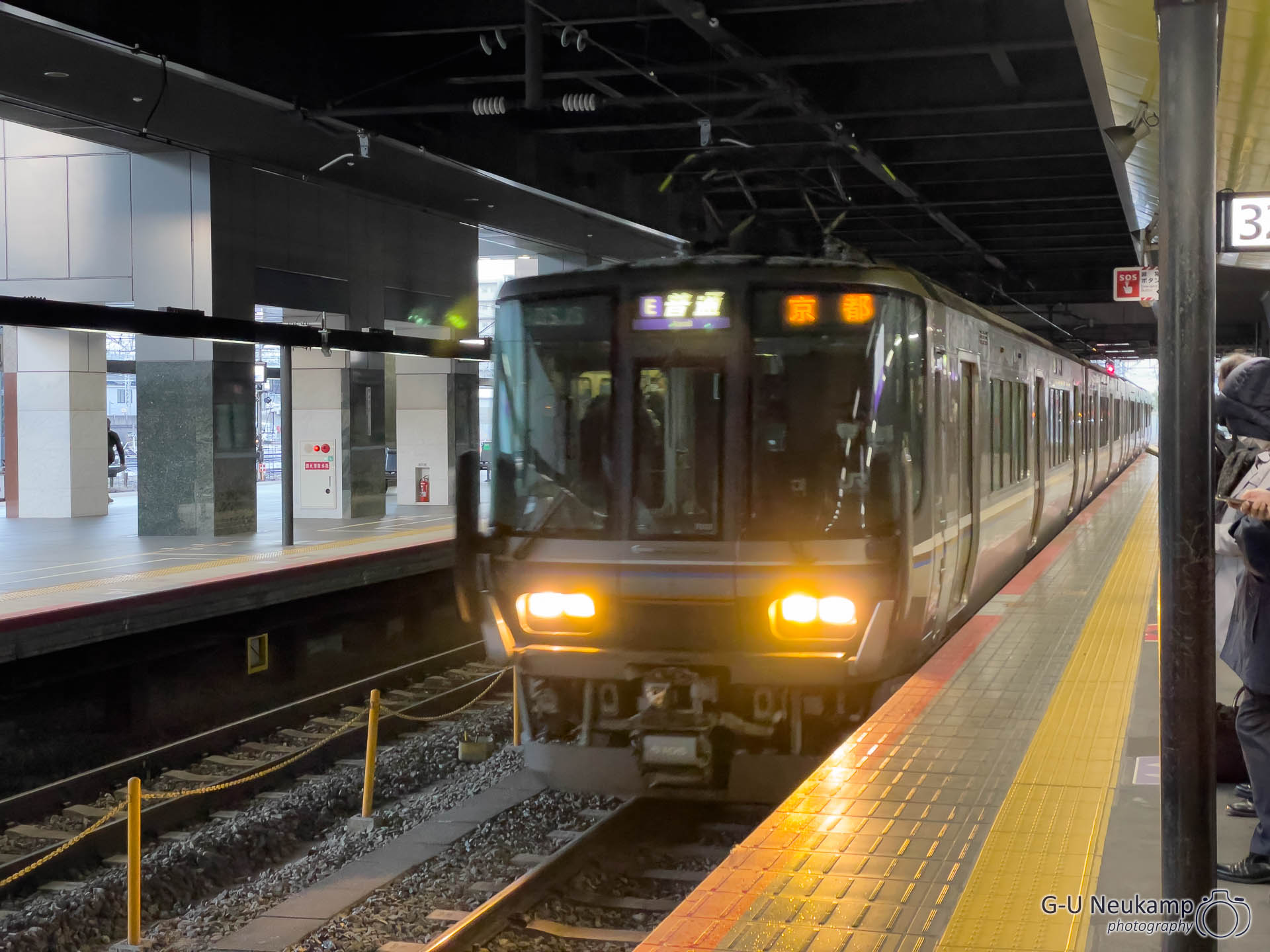
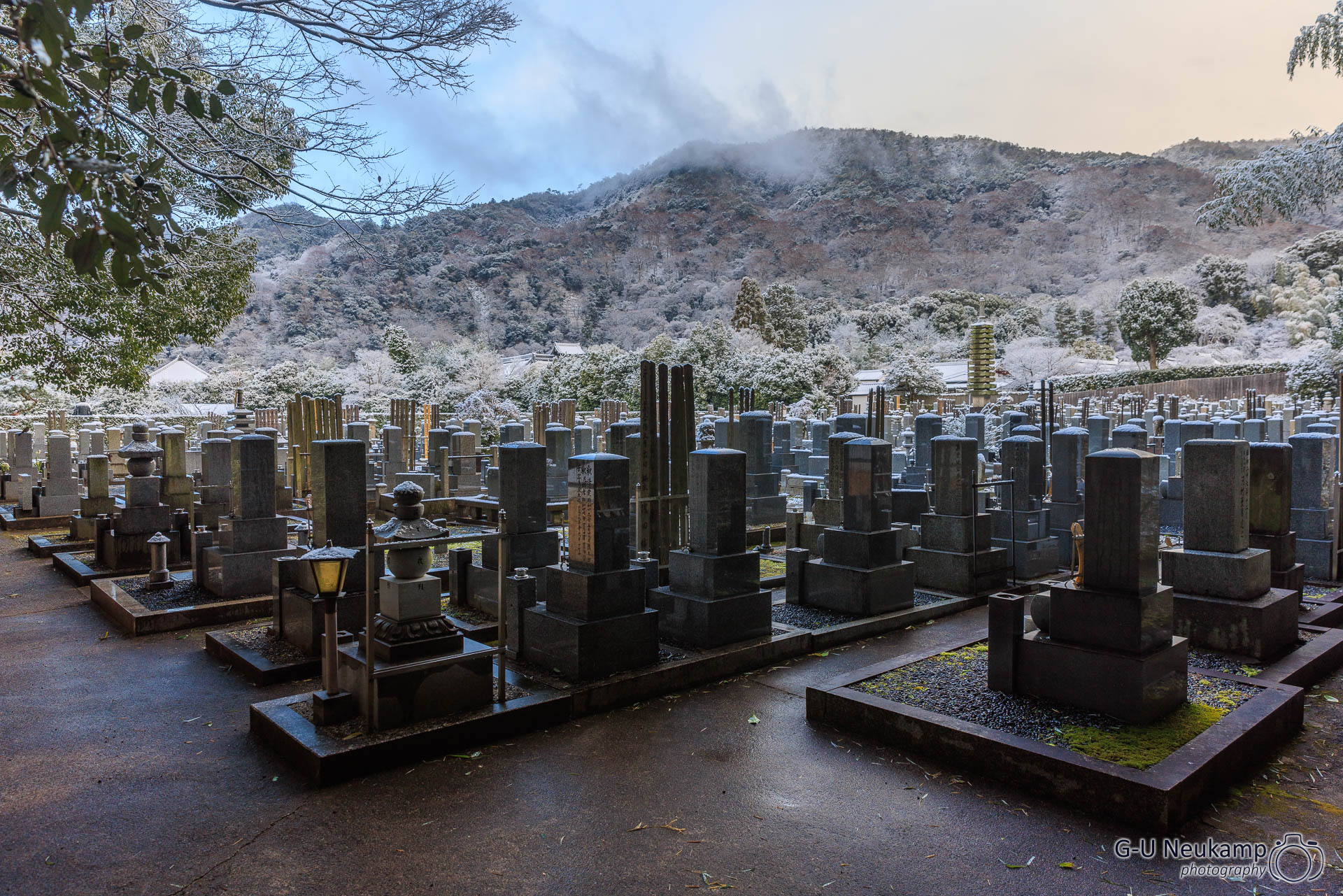
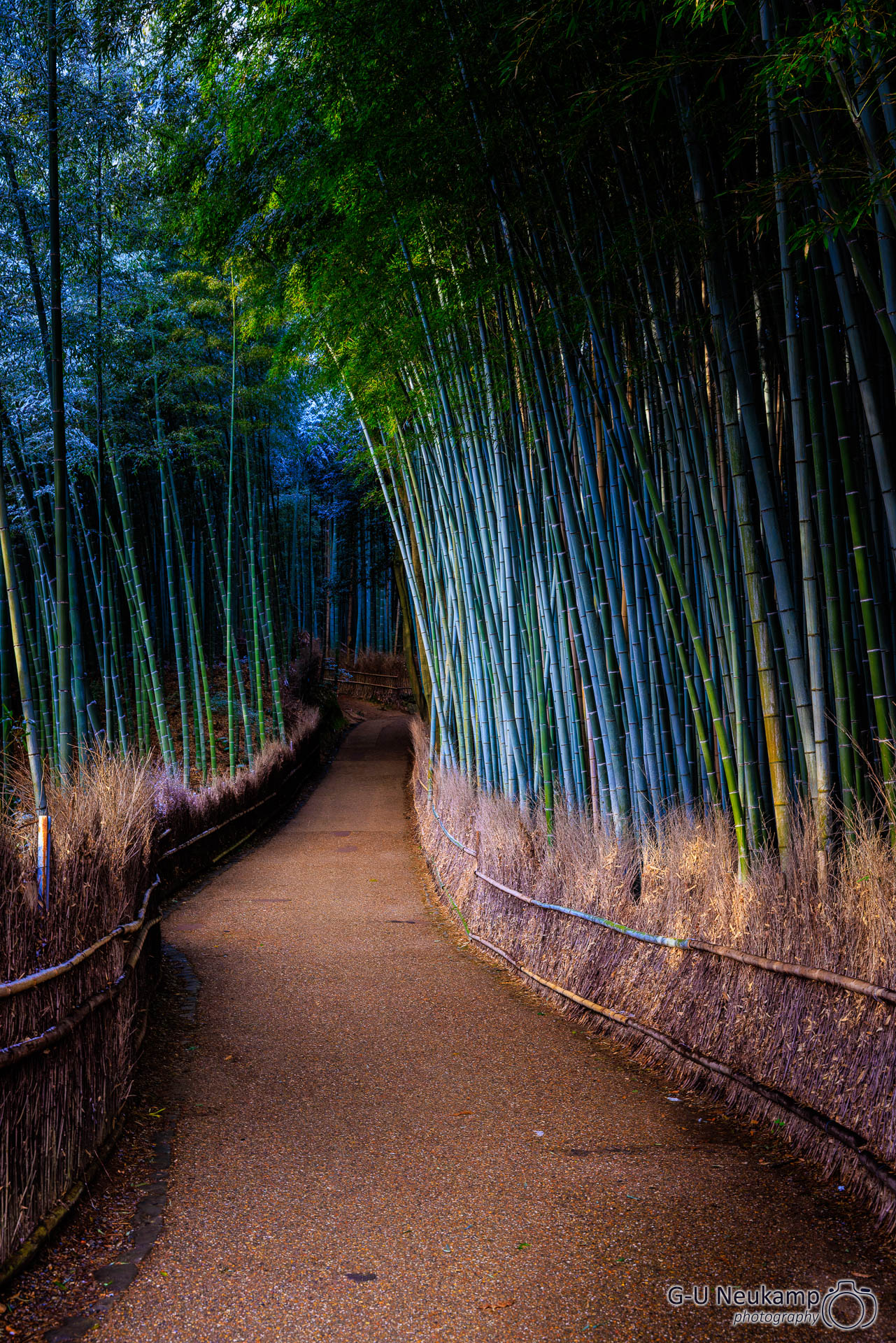
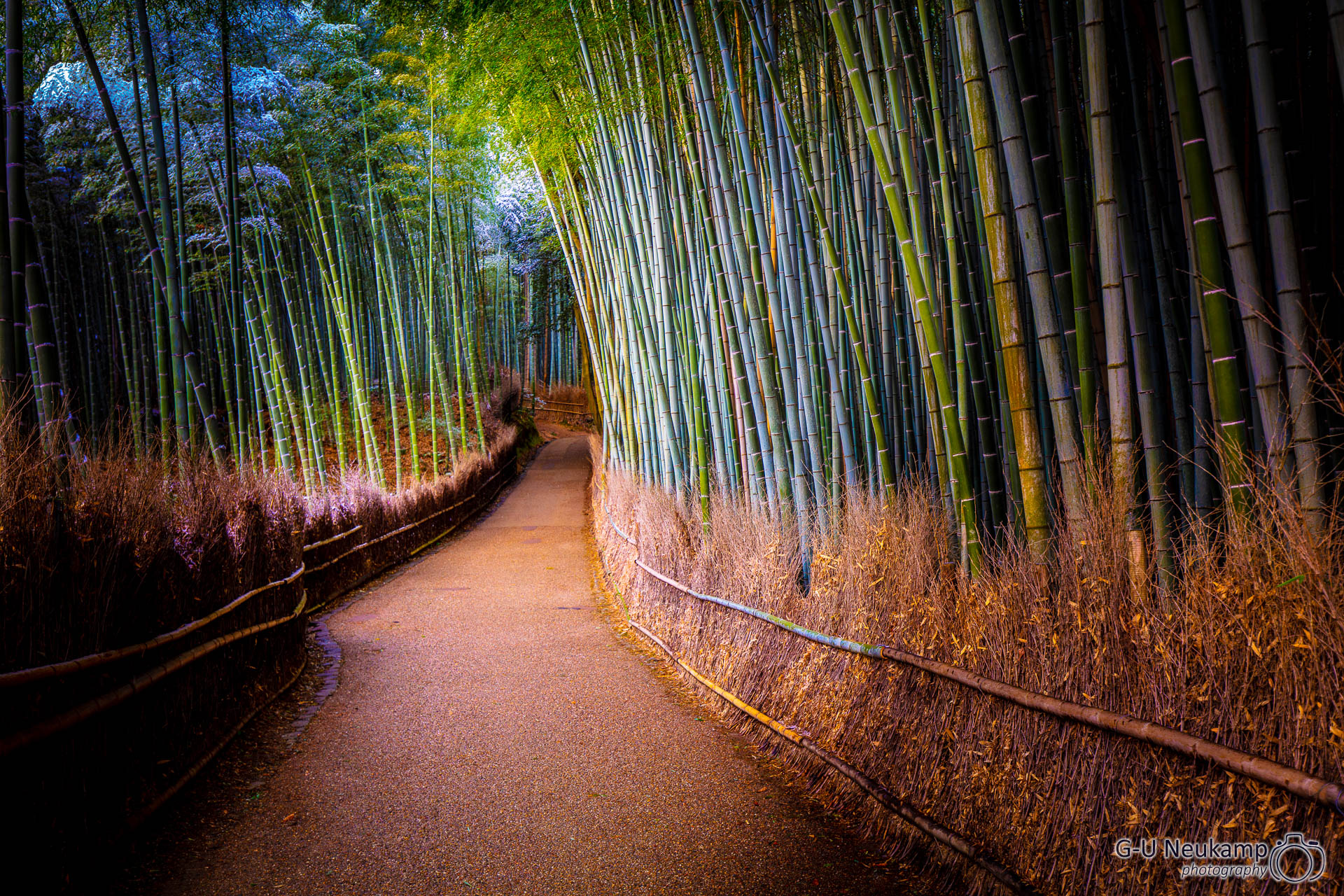
Kinkaku-ji - Temple of the Golden Pavilion
Afterwards, we continued by bus in the snowfall to the world-famous “Golden Pavilion”, the Kinkaku-ji temple (金閣寺). The temple is among one of Japan’s many UNESCO World Heritage Sites clustered in a small area in Kyōto. The top two floors of the Kinkakuji are completely covered with golden leaves, hence the name “Golden Pavilion” or “Golden Temple” Kyōto.
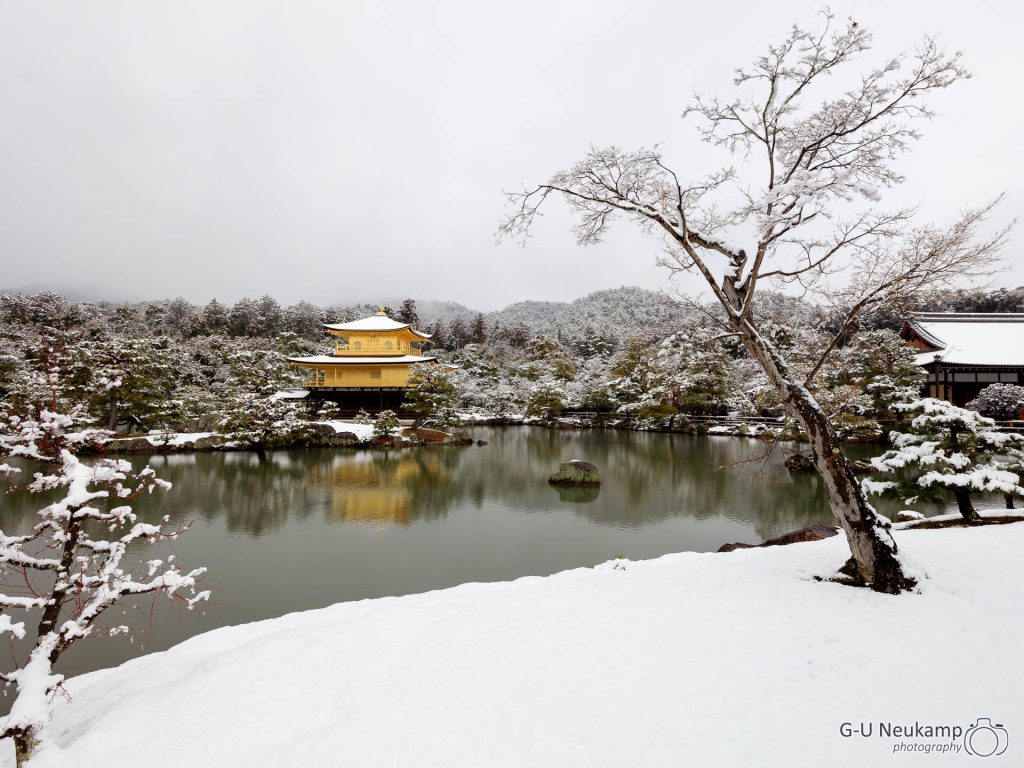
We had visited the Kinkaku-ji temple also in 2014, but now snow-covered it was a completely new experience for us this time.
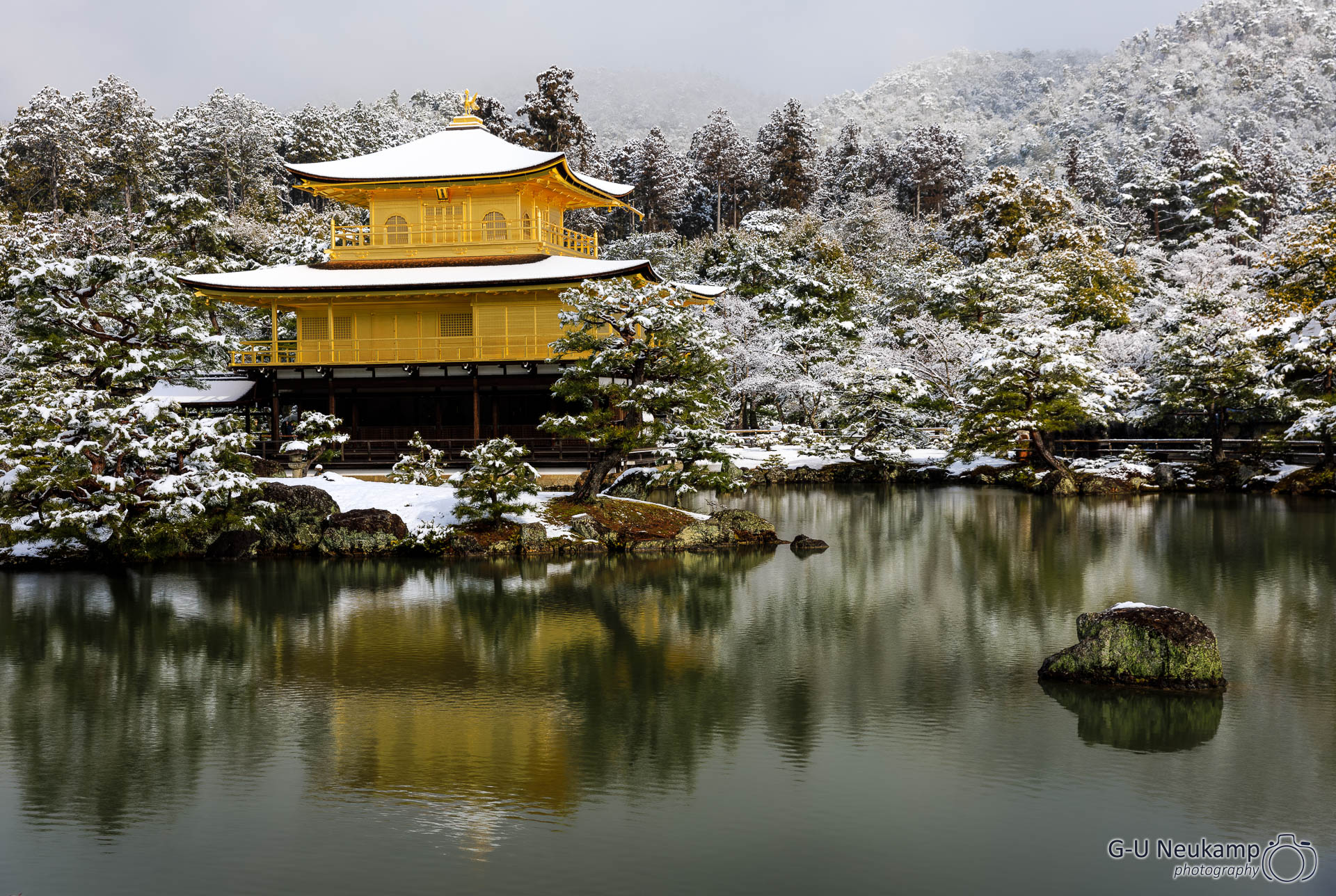
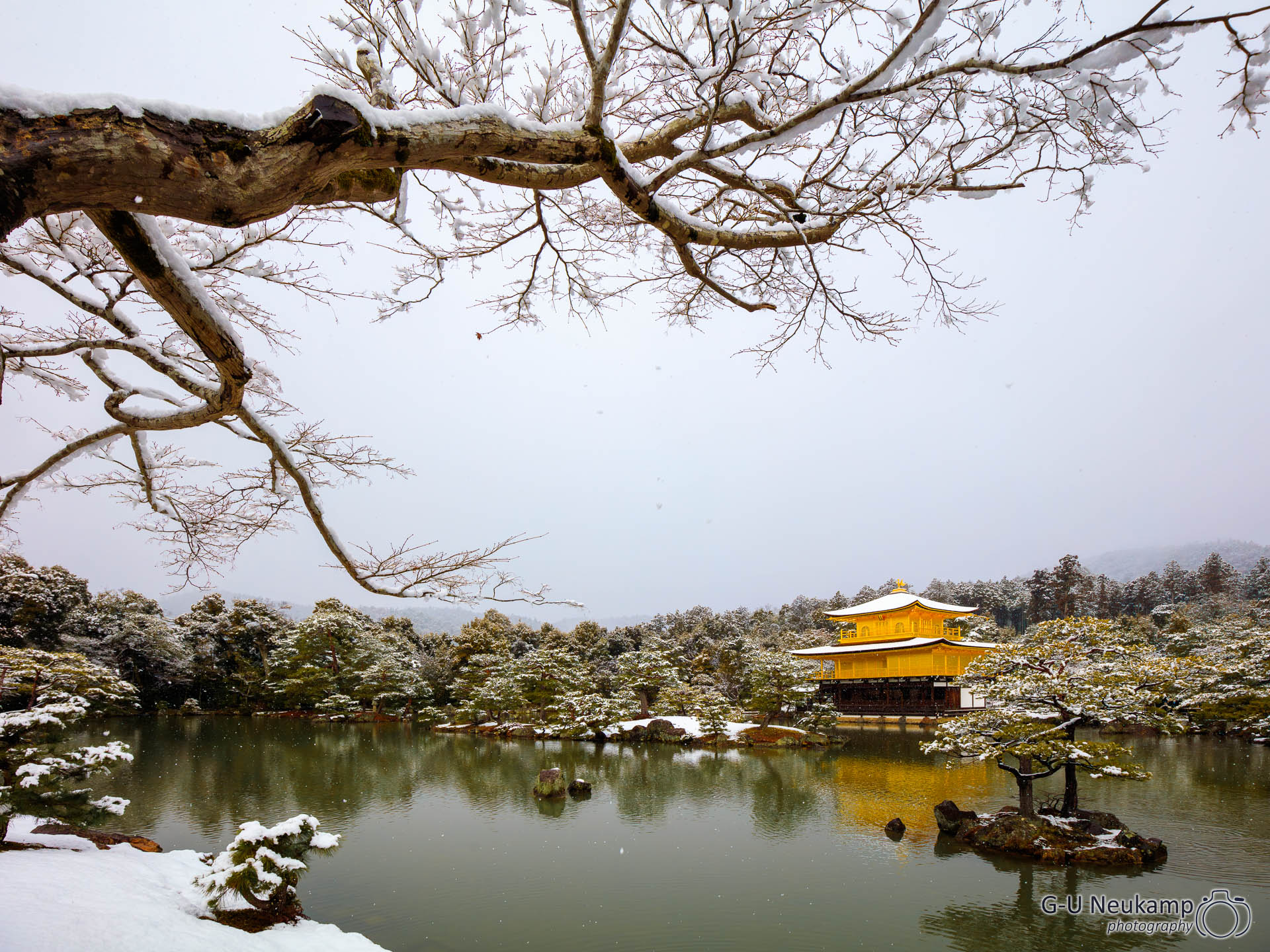
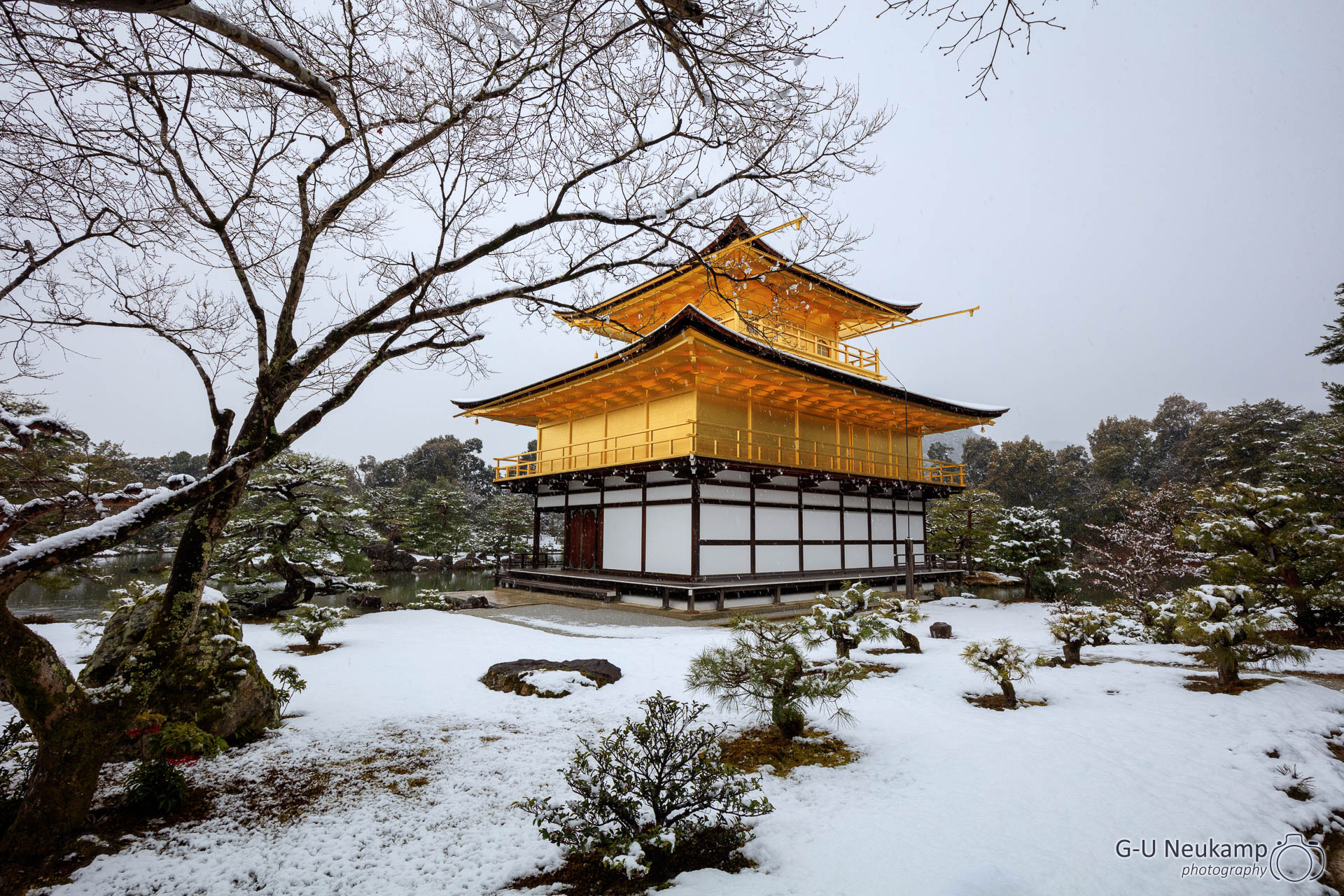
Since we were pretty frozen with all the snowfall and temperatures around zero degrees Celsius, we first allowed ourselves a nice latte macchiato in a small café before heading back to the hotel.


Ginkaku-ji - Temple of the Silver Pavilion
In the afternoon we visited the “silver pavilion”, which, however, does not live up to its name:
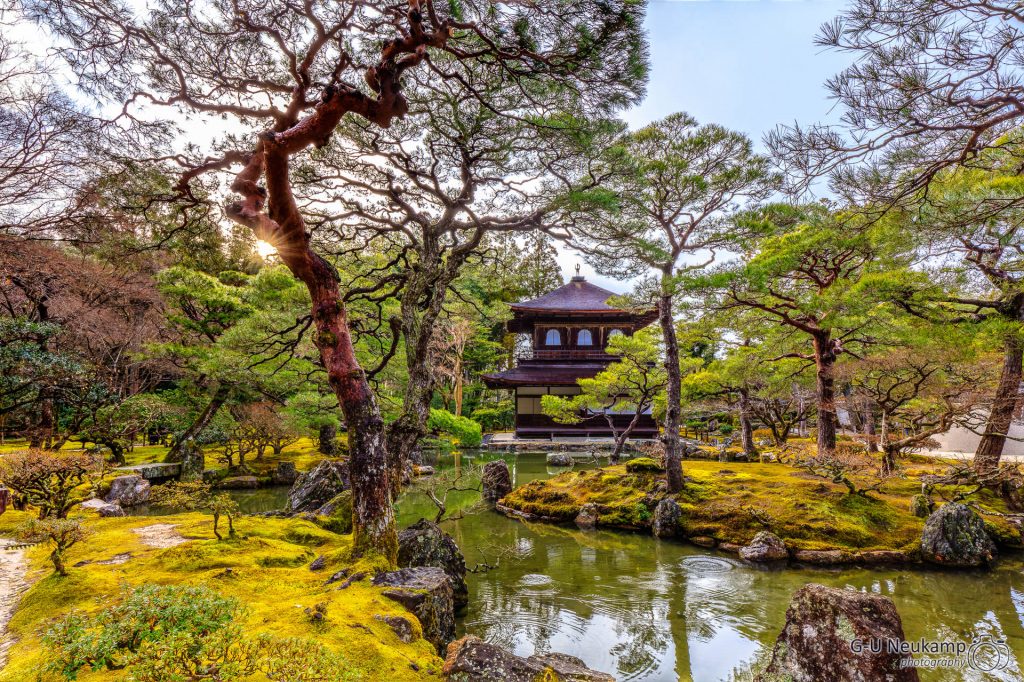
Once built in the 15th century as the retirement residence of a shogun, Ginkaku-ji is one of Japan’s most classic Zen temples and a prime example of the Wabi-Sabi Aesthetic, which finds beauty in imperfection. Before becoming a temple, the shogun’s mansion was the center of Higashiyama culture, from which tea ceremony, flower arrangement, poetry, and no-theater blossomed. Nowadays, Ginkaku-ji is one of the most famous temples in Kyōto. Despite its name (“Silver Pavilion”), the Ginkakuji lacks something, and that is silver.
Shogun Ashikaga Yoshimasa originally planned to clad the exterior of the building in silver, but this never happened.
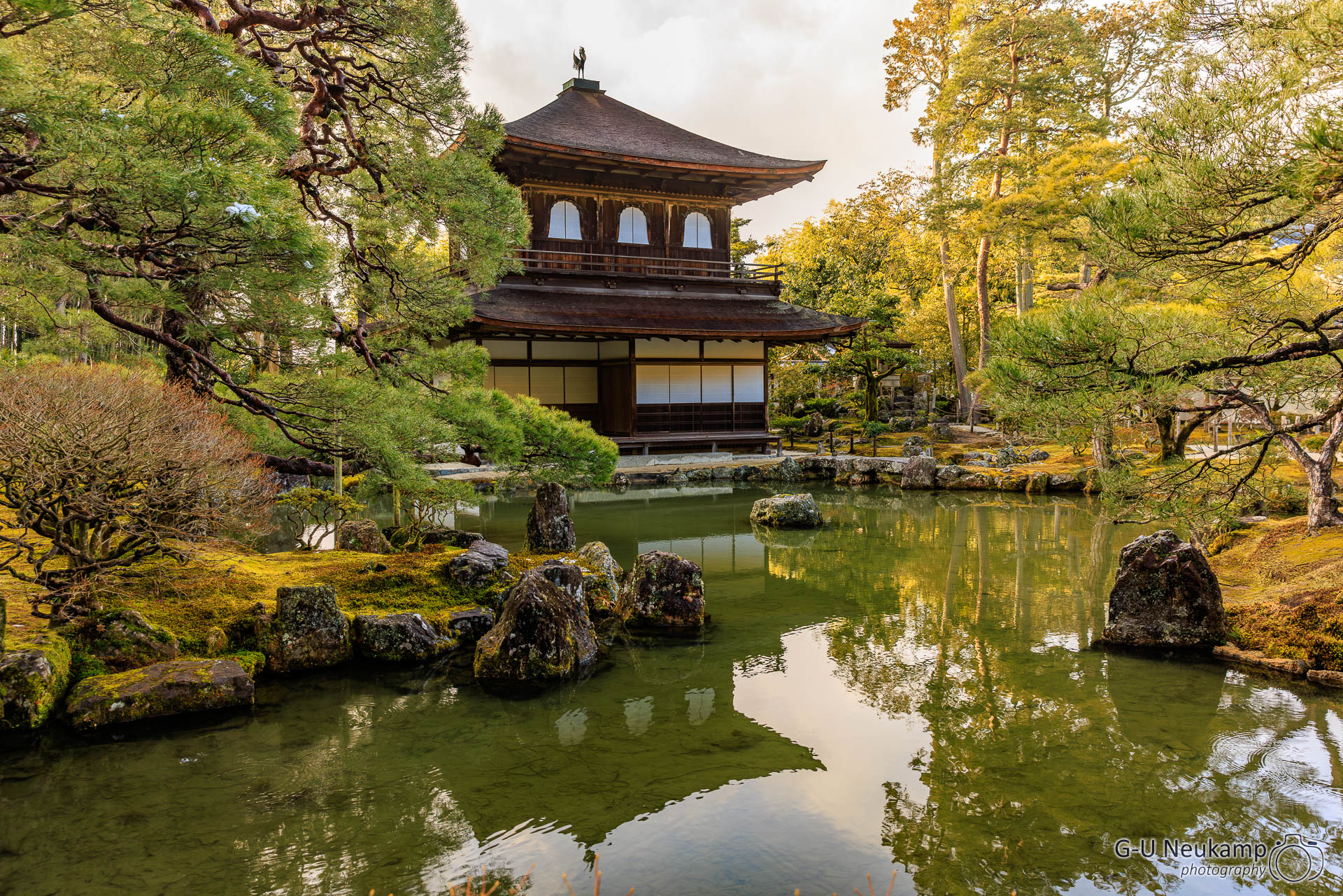
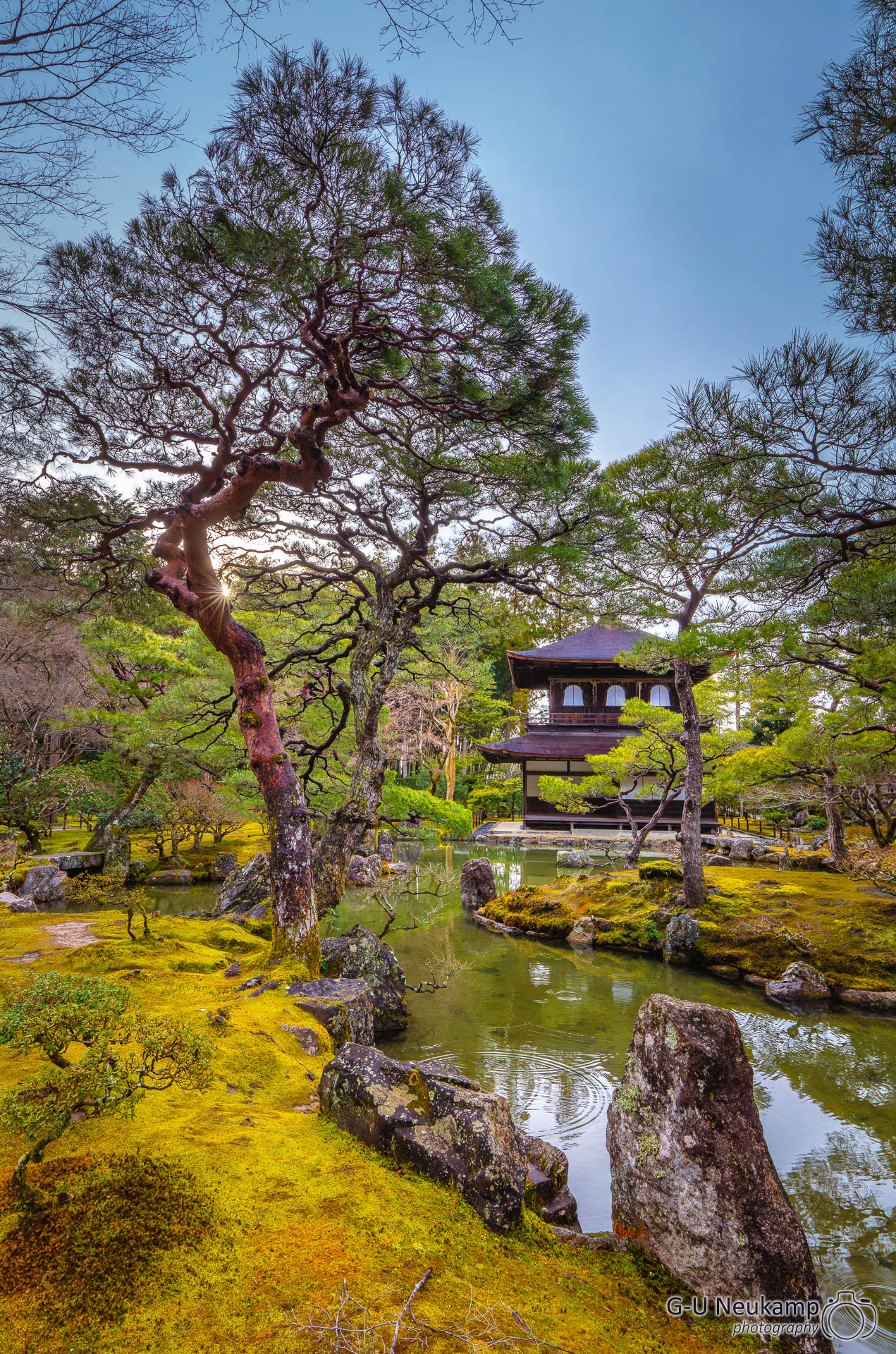
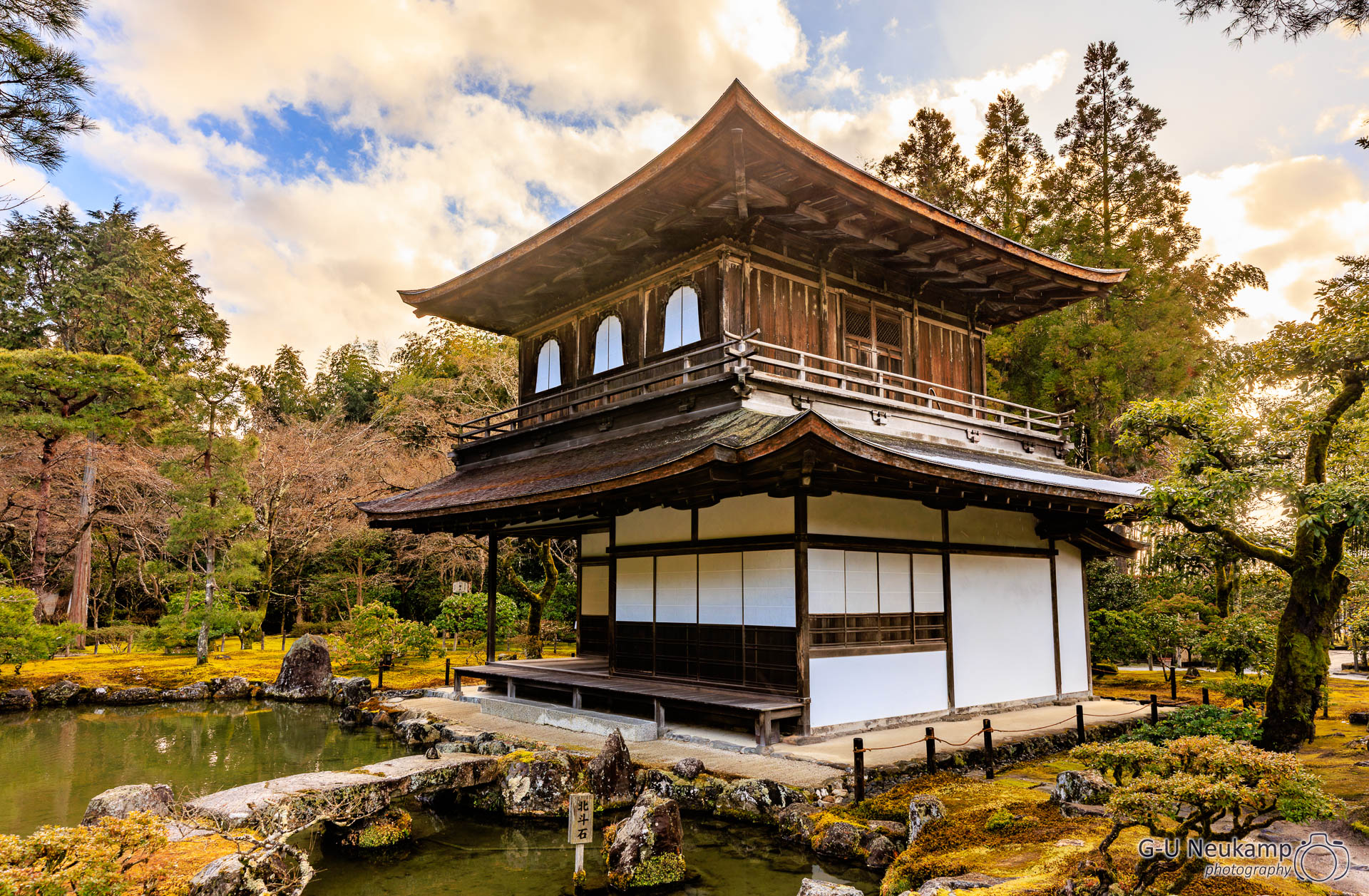
For dinner we again tried something new: Tonkatsu - Schnitzel breaded and deep fried. The meat was served with cabbage and rice, in addition there were 2 different sauces. Since the schnitzel was already served in slices, we managed well with our chopsticks once more. It was very tasty again.
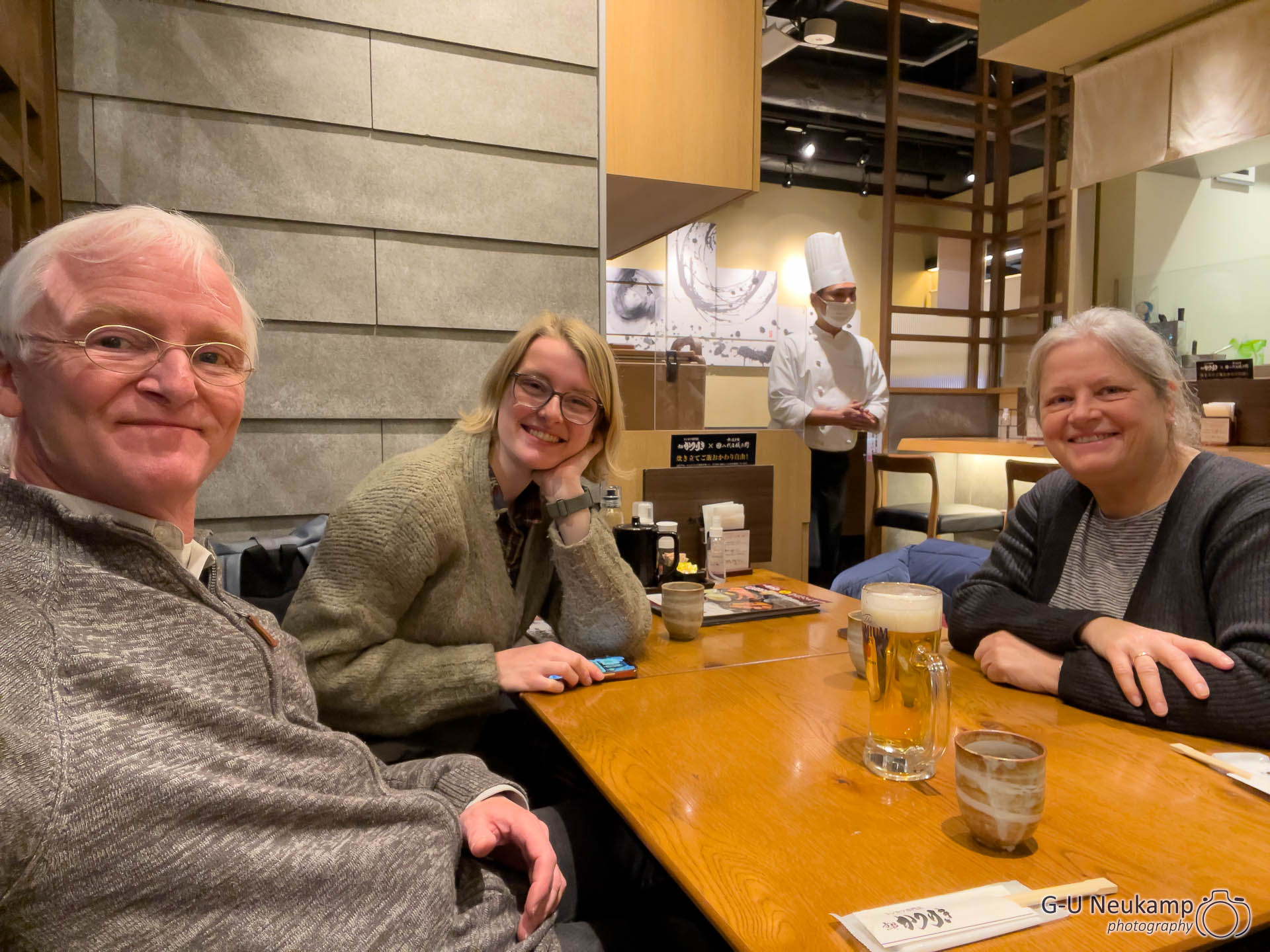
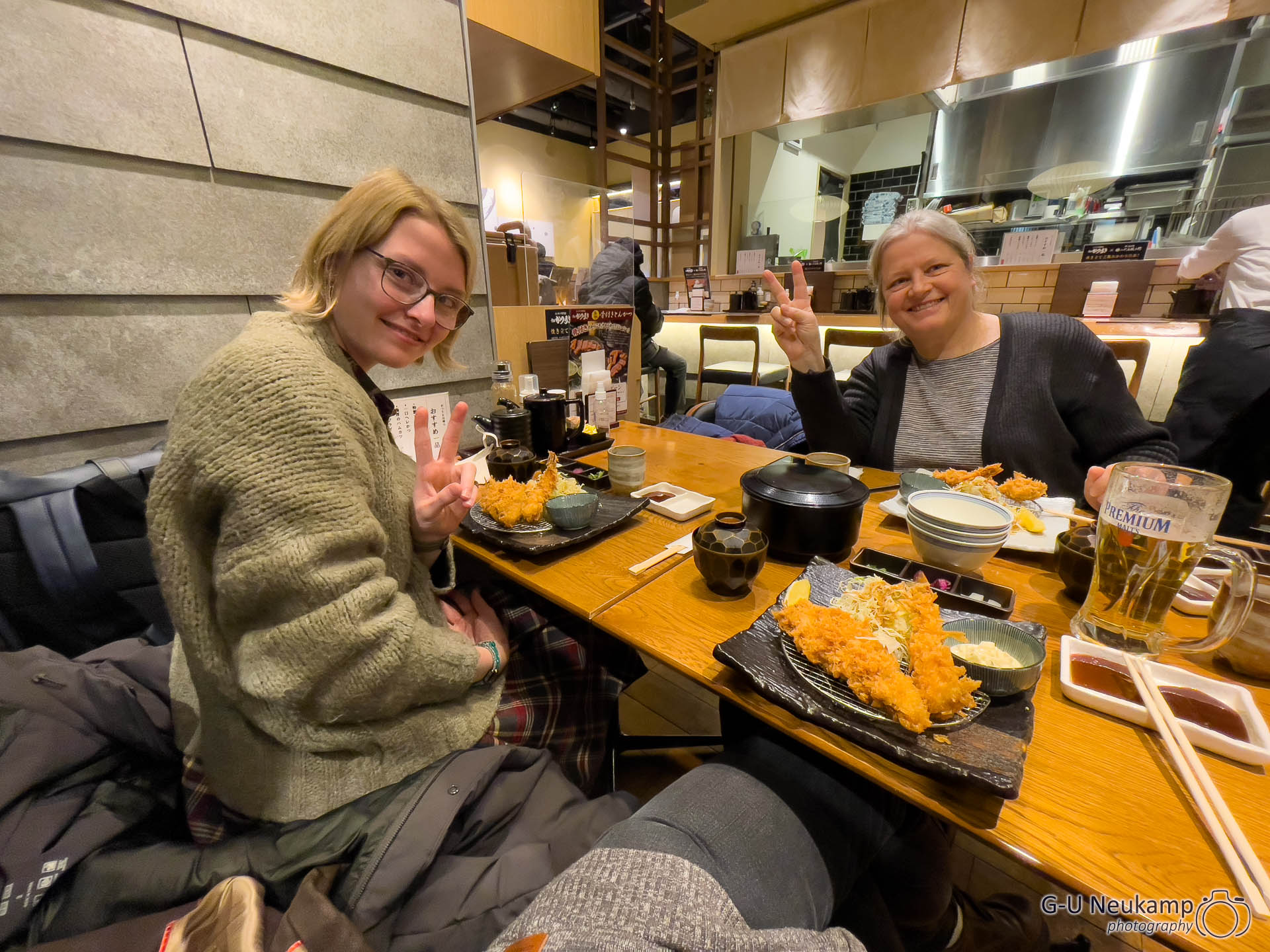
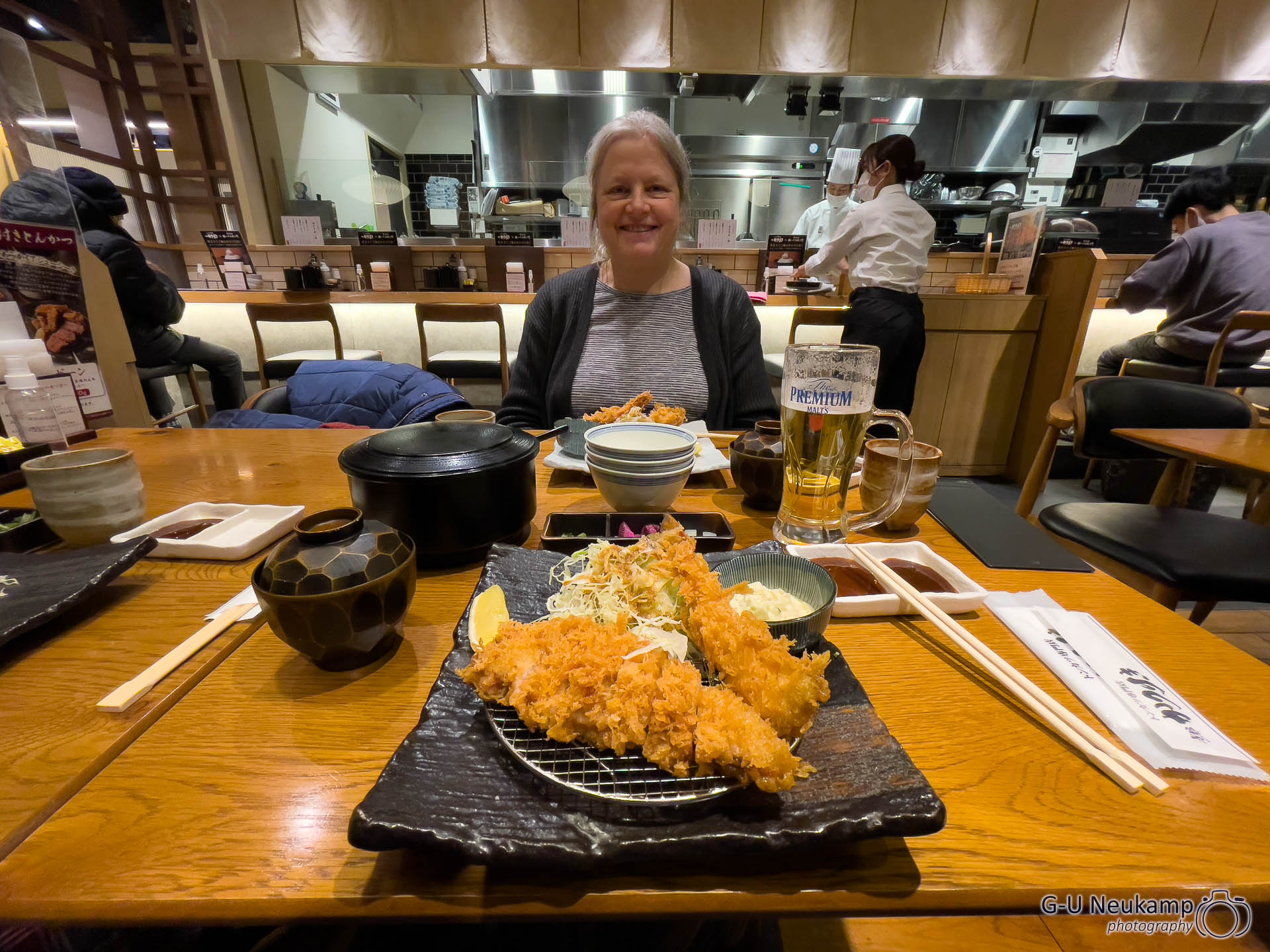
Trivia: Tonkatsu (jap. 豚カツ, engl. “schnitzel; pork cutlet; pork chop”) is a breaded cutlet (カツレツ katsuretsu, short カツ katsu, from English cutlet) from the Japanese cuisine, which is very similar to the Schnitzel Wiener Art. Similar to the Schnitzel Wiener Art, tonkatsu is also pounded flat in preparation.
It is often sold as teishoku (定食, meaning something like ‘menu’), where the tonkatsu is cut into bite-sized pieces and served on strips of white cabbage. It is accompanied by a bowl of rice, miso soup and daikon. The tonkatsu is eaten with the special tonkatsu sauce or soy sauce. A regional version from Nagoya uses miso sauce and is known as miso-katsu.
Tonkatsu is an essential ingredient for the dish katsudon, where the tonkatsu is served on a bowl of rice along with half-cooked egg, and katsukarē, where it is served with rice and Japanese curry sauce. Breading is usually done with panko, the type of breadcrumbs used in Japan.
